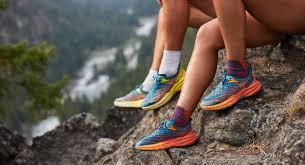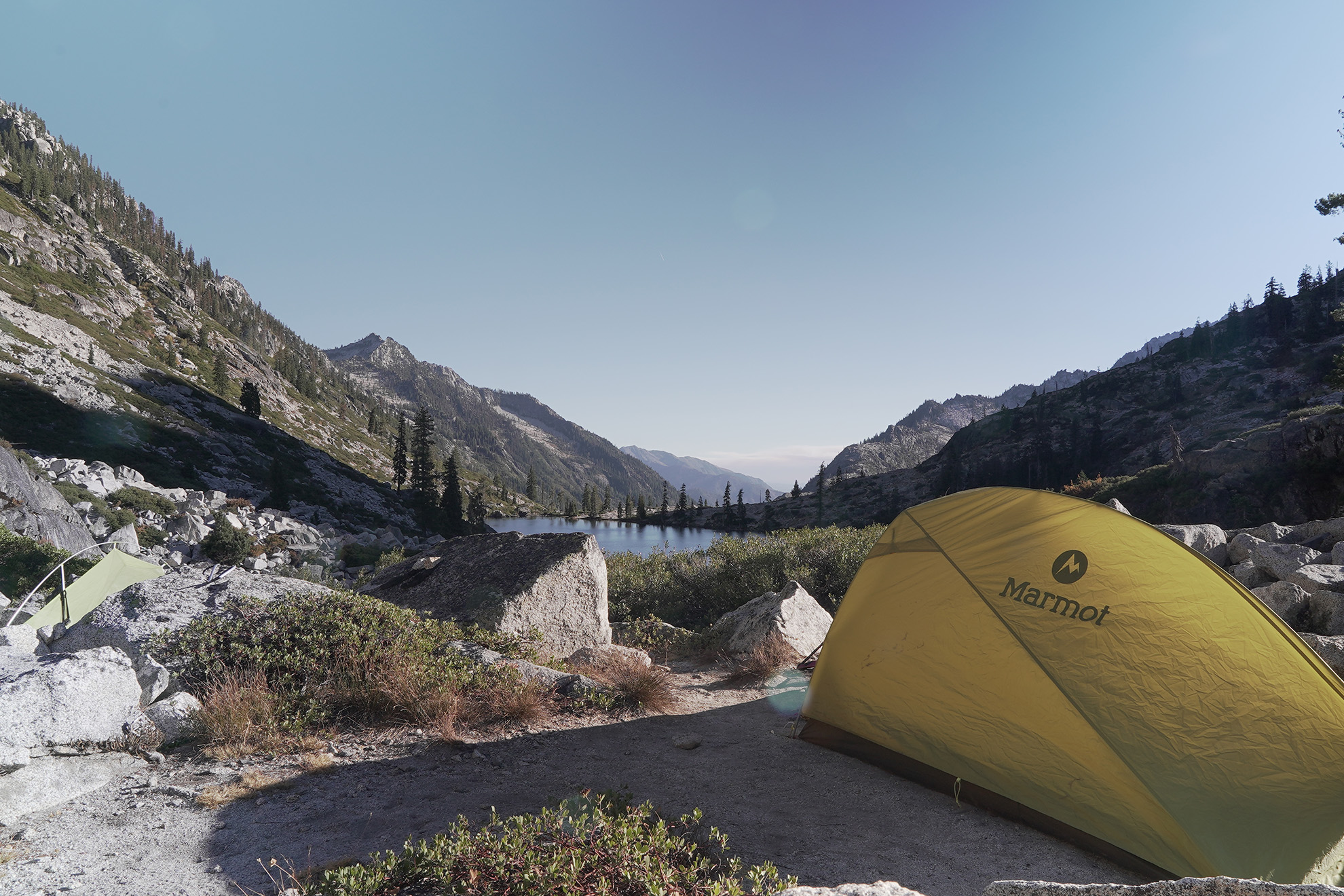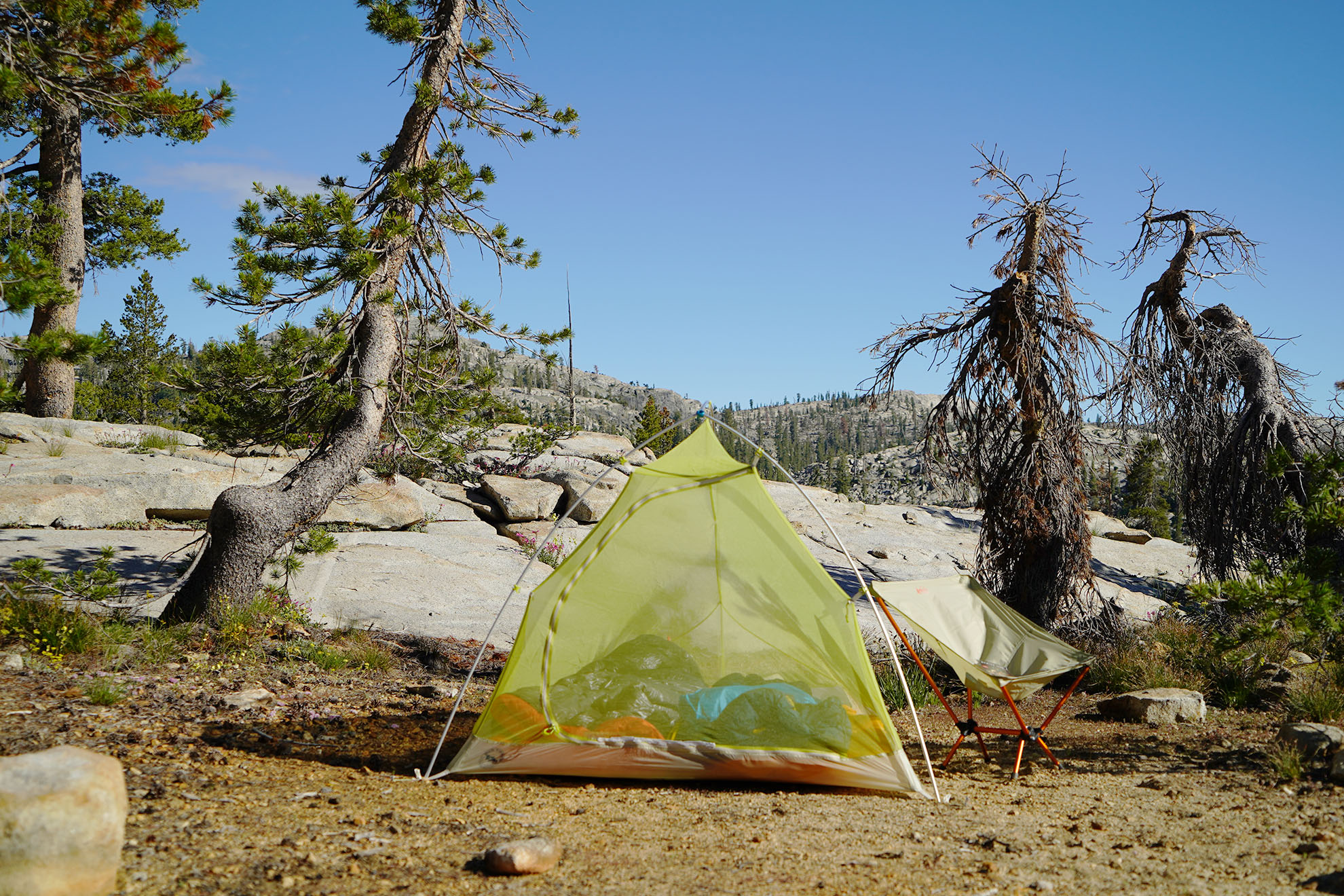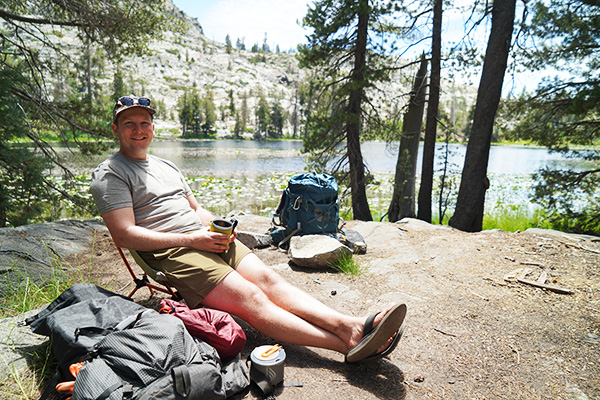Bottom Line
It’s fair to say that a lot of today’s trail running shoes have taken a page from the Speedgoat series’ book. Hoka hit the nail on the head by mixing cushioning with nimbleness, something runners have been craving, and that magic is still going strong in the Speedgoat’s fifth version. This mix is just what you need for big adventures in the mountains, especially when you’re going up and down a lot.
The shoes might have a thicker sole that doesn’t work for every race or super tricky trails, but they’re definitely worth having in your shoe lineup for those long runs.
Full disclosure : The Speedgoat 5 is my favorite trail running shoe and between 3 pairs I have close to 1,000 miles in these shoes.
Performance
The Speedgoat 5 really wows us with its cushy feel, yet it remains surprisingly responsive. Sure, it’s bouncy and it squishes down, but it still manages to feel lively underfoot. When you’re pushing the pace, the shoe backs you up, making every step feel smooth and natural. Flying downhill feels like a breeze; the shoe’s actual 6mm drop (though Hoka says it’s 4mm) hits the sweet spot, helping to ease fatigue, especially when you’re navigating tricky trails.
This ability to comfortably charge down slopes is a big reason we’re fans of the Speedgoat 5. If your running calendar features an ultra with a wild elevation profile, this shoe might just be the ideal pick.
Protection
Even without a rock plate, the Speedgoat 5’s thick midsole can handle a lot of rough treatment. Its cushioning material is soft to the touch but gets firmer as you put pressure on it, helping to prevent any discomfort.
The toe cap is tough and sturdy, yet it doesn’t cause any trouble inside the shoe, like blisters or uncomfortable rubbing. While the generous midsole offers plenty of protection, it does trade off a bit of ground feel, which is to be expected with such a high stack height.
This trade-off means you might not feel the trail as much during a long ultra, but on the flip side, your feet are likely to feel less beat up over the course of a long day. For shorter distances or really tricky trails, the extra foot protection does mean you lose some of that essential feel of the ground beneath you. In these situations, we lean towards shoes with a rock plate. They offer great protection while also lowering the shoe’s overall height, giving you a better sense of the terrain.
Traction
The Speedgoat series maintains its reputation for excellent traction with a Vibram outsole stretching the full length of the shoe. The multidirectional lugs excel at gripping the ground, whether you’re powering uphill or cruising downhill, further boosting its standout downhill capabilities.
On days when we anticipated a lot of vertical gain, this shoe was our go-to, proving itself on local steep trails. The combination of cushioning, the shoe’s drop, and its traction clearly sets it apart as a top choice for this kind of running.
The outsole of the Speedgoat 5 is built tougher than some other models to withstand heavy use, which contributes to its longevity.
This does mean that it might not offer as much grip in wet conditions, particularly on slopes, as softer outsoles would. Yet, in dry to moderately damp conditions, it performs admirably, ensuring a stable and confident stride.
With 4mm lugs, it might not be the most comfortable option for smoother trails or road sections, where the lugs can be more pronounced underfoot. However, we generally run on very rocky and unstable local terrain where the lugs are welcome and helpful.
Sensitivity
The Speedgoat 5 stands out in our selection with a stack height of 35mm, making it a prime choice for quick descents and long-duration ultras, though it sacrifices a bit of sensitivity for this comfort. T
his level of sensitivity dictates its place in our shoe collection; while it’s not lacking, it doesn’t offer the sharp, connected feeling to the trail on very technical ground.
The shoe’s bulk hinders a close trail feel, even though its weight is competitive other top picks.
However, it’s worth noting that a more sensitive shoe might not be as forgiving, potentially leading to quicker fatigue.
The Speedgoat 5 isn’t designed to be the most agile runner; it’s built for durability and lasting comfort, particularly for those long days with lots of elevation change.
We didn’t encounter any problems on technical trails at a controlled pace, but for races or faster efforts, a shoe with a lower stack height might offer a more secure feel.
Stability
A broader base can offset some of the stability challenges introduced by a taller stack height. Despite its ample cushioning, the Speedgoat 5 isn’t excessively soft, which lends the shoe a degree of rigidity.
Overall, stability isn’t a big concern for us, though there are specific situations where we might choose another shoe if we had the option.
For activities like side-hilling or navigating particularly rocky trails, the Speedgoat 5 can feel somewhat unstable. The tall stack height can lead to noticeable twisting when traversing slopes.
Thankfully, Hoka has designed the shoe with a minimal heel drop, helping the foot maintain a more natural position, despite the significant cushioning.
The shoe’s toe box and upper offer a more generous, performance-oriented fit compared to models with single-knit uppers.
This wider base helps to alleviate tightness and promotes greater foot stability. While it may not match the stability of shoes with lower stack heights and smaller heel drops, we only found stability to be an issue in extremely rocky and technical environments with the Speedgoat 5.
Comfort
The Speedgoat 5 features a dual-layer stretch mesh upper that strikes a fine balance between breathability and durability.
We really like how it snugly fits the foot without feeling too tight or too loose. The use of stretch material across the top of the foot cleverly minimizes creasing, an issue that often takes time to ease in other models.
The ultra-thin tongue is another highlight, fitting well without absorbing moisture and potentially causing chafing.
Though we found the heel pocket could be a tad deeper to prevent initial slippage, this issue lessened as the shoes broke in, and, impressively, we didn’t end up with any blisters despite some movement.
While we tested the standard width, it’s worth noting that Hoka also offers a wide version for those with broader feet.
The shoes provide minimal arch support, which we didn’t find to be a problem, thanks to their overall excellent stability.
Hoka’s reputation for comfort continues with the Speedgoat 5, maintaining our high regard for their footwear.
Weight
At 10.76 ounces per shoe (for a US size 10.5), the Speedgoat 5 isn’t the lightest option, but it offers considerable technical prowess.
The bit of extra weight is a worthwhile trade-off for the fatigue reduction and comfort it delivers.
The heft of the shoe is justified by the durable materials used in the upper and the rubber outsole. While the Speedgoat 5 may not give you that quick-footed sensation, making it less ideal for fast-paced runs on easier trails, it stands out in virtually every other scenario.
Except for sessions focused on speed lasting more than two hours, this shoe emerges as a top choice. If we were to pick just two shoes, the Salomon S/Lab Ultra 3 and the Speedgoat 5 would cover all bases, ensuring readiness for any race or adventure on the schedule.
Should You Buy the Hoka Speedgoat 5s?
If you’re in the market to add a shoe to your collection that offers extra cushioning, perfect for those recovery days or big vertical challenges, the Speedgoat 5 should definitely be on your list.
It’s a crowd-pleaser in the running community and a top pick among our testers, thanks to its exceptional comfort paired with aggressive performance capabilities.





